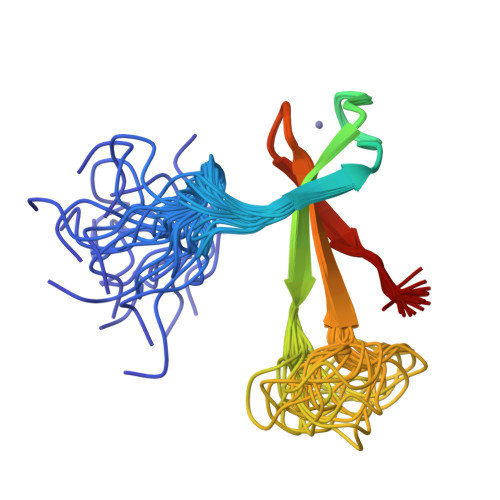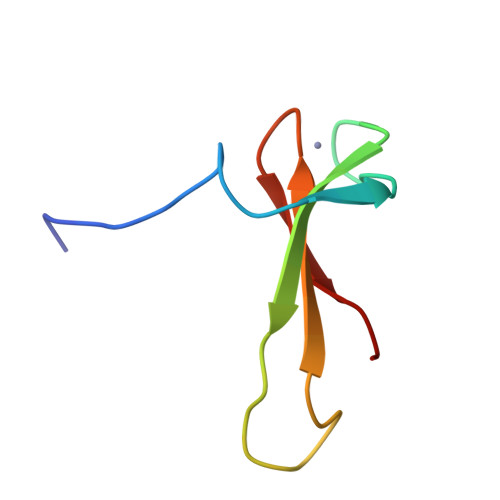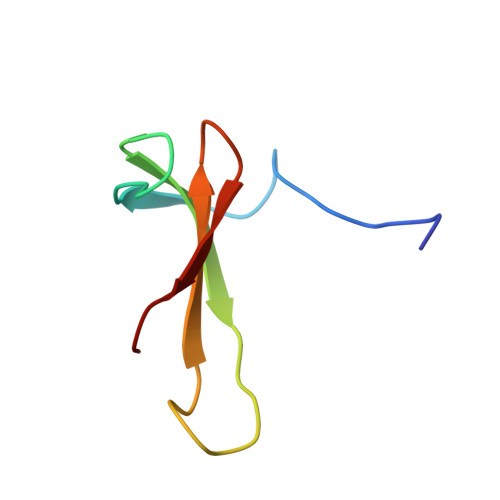High-resolution structure of an archaeal zinc ribbon defines a general architectural motif in eukaryotic RNA polymerases.
Wang, B., Jones, D.N., Kaine, B.P., Weiss, M.A.(1998) Structure 6: 555-569
- PubMed: 9634694
- DOI: https://doi.org/10.1016/s0969-2126(98)00058-6
- Primary Citation of Related Structures:
1QYP - PubMed Abstract:
Transcriptional initiation and elongation provide control points in gene expression. Eukaryotic RNA polymerase II subunit 9 (RPB9) regulates start-site selection and elongational arrest. RPB9 contains Cys4 Zn(2+)-binding motifs which are conserved in archaea and homologous to those of the general transcription factors TFIIB and TFIIS. The structure of an RPB9 domain from the hyperthermophilic archaeon Thermococcus celer was determined at high resolution by NMR spectroscopy. The structure consists of an apical tetrahedral Zn(2+)-binding site, central beta sheet and disordered loop. Although the structure lacks a globular hydrophobic core, the two surfaces of the beta sheet each contain well ordered aromatic rings engaged in serial edge-to-face interactions. Basic sidechains are clustered near the Zn(2+)-binding site. The disordered loop contains sidechains conserved in TFIIS, including acidic residues essential for the stimulation of transcriptional elongation. The planar architecture of the RPB9 zinc ribbon-distinct from that of a conventional globular domain-can accommodate significant differences in the alignment of polar, non-polar and charged sidechains. Such divergence is associated with local and non-local changes in structure. The RPB9 structure is distinguished by a fourth beta strand (extending the central beta sheet) in a well ordered N-terminal segment and also differs from TFIIS (but not TFIIB) in the orientation of its apical Zn(2+)-binding site. Cys4 Zn(2+)-binding sites with distinct patterns of polar, non-polar and charged residues are conserved among unrelated RNAP subunits and predicted to form variant zinc ribbons.
Organizational Affiliation:
Department of Chemistry, Center for Molecular Oncology, University of Chicago, Illinois 60637-5419, USA.



















